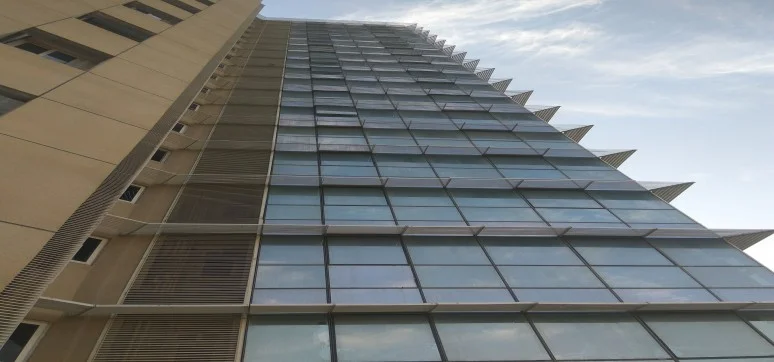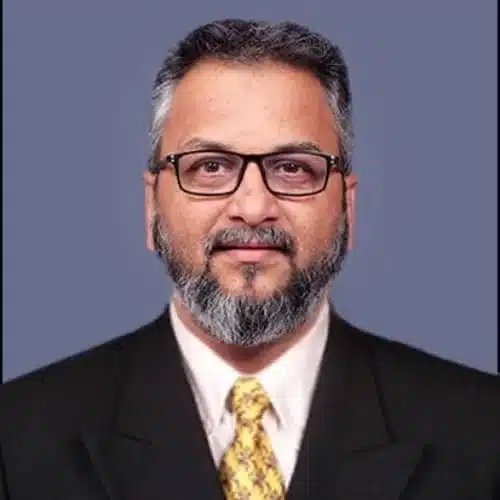The word ‘Façade’ means ‘Face’ in French, and a building’s façade is actually the front of a building and its face. Glass walls on the exterior of buildings are widely used to improve the beauty, keep the interior temperature in check, and allow enough natural light to enter which gave rise to the increasing use of glass.
Some of the advantages of using glass in high-rise buildings:
- Efficiency: The glass façade on the exterior of the building allows an optimum level of natural light to enter, which reduces the cost of lighting.
- Safety & Maintenance: The key factors to consider while designing a façade are safety, longevity, and maintenance. Glass has a smooth glossy surface, so it is dustproof and can be cleaned efficiently. Unlike other materials, it is easy to maintain.
- Strength & Weather Resistance: The materials used in glass façades are extremely strong and durable. They are designed to resist major weather elements, including the sun, high winds, rain, snow, etc., and can retain their appearance and integrity in most of the given conditions. Glass is corrosion resistant; it does not rust or corrode due to weather.
- Adaptability: It can be made translucent or moulded in different shapes, and it can offer a lot of flexibility to the architect in terms of usage in the building.
- Appearance: One of the most preferred ways to instantly enhance the style quotient of a tall building is a glass façade. Apart from lending a contemporary yet open look to a modern-day building, it also offers sound and heat insulation, making them a favourite choice. Glass façades can be designed in building façades give off a sleek, modern feel that entices many potential clients, plus can help with employee productivity and other similar factors.
DIFFERENT TYPES OF GLASS FAÇADES
There are various types of glass façade systems being used depending upon architectural and functional requirements which are described as follows.
-
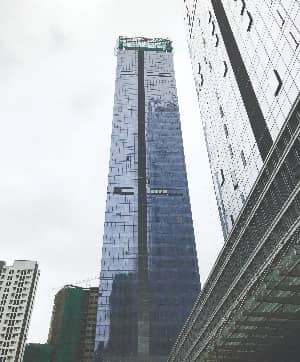
Typical unitized curtain walls require less space Unitized Curtain Wall: The unitized curtain wall system is composed of large units or panels that are fabricated, assembled and glazed in the factory in a controlled environment, shipped to the site and erected on the project building. Since there is no on-site glazing, another major benefit of using a unitized system is the speed of installation. The distinctive advantage of unitised curtain walls is the efficiency of repetitive units and their installation. Another major factor is the higher quality assurance due to fewer interfaces and workmanship on-site. Working at heights is moved to the inside of the building slab, and interior wall assemblies can be easily integrated. In that regard, nowadays many developers prefer unitized curtain walls in their building projects much more.
- Semi-Unitized Curtain Wall: Semi-unitized curtain wall is a type of curtain wall that combines the advantages and features of the Stick and Unitized curtain wall. The entire aluminium frame is divided into Main Frame and Support Frame, and are linked together by hooks. The main aluminium frame is manufactured and delivered to install at sites as a stick system, the support aluminium frame is assembled with the glass panels glazed at the factory, shipped to the site and then installed to the main aluminium frame structure.
- Stick Glazing: In the stick curtain wall system, the components are assembled piece by piece on the structure of the building. This system is mainly used for low-rise buildings or in small regions. Because by using this system, it is important to have exterior access. This system requires several steps to be installed and sealed, which means more time is spent on site. However, these systems can be more economical than unitised ones, especially if the building facade requires less space.
- Frameless Glazing System: Frameless glazing is an aesthetic and economical alternative to curtain walling or bolted glass. Spider glazing systems are the most famous frameless glazing system typically being used. This system is usually installed in areas where maximum transparency is required. Spider fitting systems connect glass together in an open space using various types of light steel/glass structures via various types of spider fitting members to form flexible and unobstructed curtain wall façade. This system can be single or double- glazed and uses toughened or toughened laminated glass panels. Joints between the units are pointed in a high-performance weathering silicone.
- Tension Rod Systems: A tension rod structure composed of rods or cables is a glass skin support system of excellent performance. It is backed with suspended point fixed glass with high-tension stainless steel vertical rod trusses as wind bracing. The trusses are tensioned between the concrete floor slab and the steel roof structure. The system pretension loading and sizing of the tension rods are determined from various factors like the thermal load, dead load, creep, seismic loading and wind loading conditions specific to the supporting structure.
PERFORMANCE REQUIREMENTS – THERMAL INSULATION, SOUND REDUCTION & SOLAR CONTROL
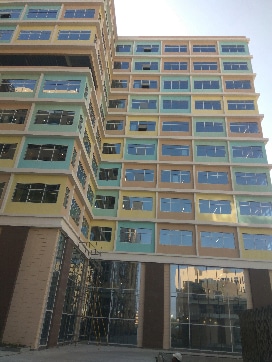
The façade is one of the most significant contributors to the energy budget and the comfort parameters of any building. Control of physical environmental factors must be considered during the design process, as well as design strategies that improve occupants’ comfort.
High-performance glass façades need to block adverse external environmental effects and maintain internal comfort conditions with minimum energy consumption, and the location and climate become crucial factors in selecting appropriate design strategies. With an increasing need for resource-efficient building solutions, the selection of high-performance glass for the façade is a must.
Following are some of the factors that need to be considered while selecting high-performance glass for the façade.
U Value: The U value indicates the rate of heat flow due to conduction, as a result of temperature difference between inside & outside. The lower the U value, the lower the heat transferred through the glass, which means better thermal control.
Shading Heat Gain Coefficient (SHGC): The shading coefficient indicates the extent of direct solar heat gain. The lower the shading coefficient, the better the glazing in preventing solar heat gain.
Visible Light Transmission (VLT): Visible light transmission indicates the percentage of the visible portion of the solar spectrum that is transmitted through a given glass product. The higher the VLT, the higher will be the light penetration. Visible light makes up about 47 per cent of the solar spectrum, with wavelengths from 380 to 780 nanometers.
Low Emissivity: Emissivity is the ability of a surface to reflect or emit heat by radiation. The lower the number, the more efficiently the object reduces radiative heat gain or heat loss, which means a lower U-factor and better insulation. Low-emissivity Coatings are very thin (in nanometres), virtually invisible, metal oxide layers deposited on the surface of the glass to reduce the U factor by suppressing radiative heat flow.
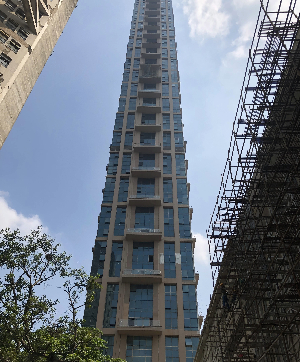
There is a growing interest in glass materials and detailing technologies that result in glazing systems with a high ability to interrupt heat gain/loss while allowing maximum visible light transmission. Technologies and solutions to enhance the thermal performance of glazing systems include inserting inert gas dry air, vacuum, argon, or krypton between the double-glazed glass to provide a good thermal break to reduce thermal conductance.
Sound insulation design for structurally glazed façade is an important task in environmental noise control, as increased continuously repeated noise is a significant factor impacting people’s well-being and is associated with a negative impact on their health. Some Unitized curtain walls with pressure plate buildings like hospitals, educational institutes, and office buildings are more sensitive to noise affecting the occupants/users of that building.
According to a survey, road traffic noise is the most important source of annoyance. Other sources like railways, aircraft, and factory operations are also contributing to noise pollution and need to be controlled. Methods of creating sound-insulating walls are common and well known, but if there is a glass façade instead of walls, the glass needs to provide acoustic control.
The simplest, cheapest, and most effective way to protect the inside area against such noise pollution is to use thicker glass or replace the single glass with laminated glass or laminated DGU, etc. Even increasing the air gap between the DGU has a very significant impact on sound reduction. The acoustic performance can be varied by combining different thicknesses of glass with the PVB interlayer to achieve a specified rating. In this way properly selected glass offers the opportunity to achieve project-specific noise reduction requirements.
PROS AND CONS OF GLASS FAÇADE BUILDINGS
The choice of façade material for a structure varies with its design and context, such as occupancy, location and orientation, with residential and commercial buildings having specific demands. Durability, maintainability, sustainability and cost are important factors too. Glass becomes the ideal choice for façades because of its intrinsic property to transmit more light than any other material, contributing to better natural lighting and thereby reducing energy consumption on artificial lighting. However, there are some advantages as well as disadvantages while using glass in the building façades. Let’s have a look.
Some of the advantages as described as follows:
- It adds to the beauty of a building. Since it can be made translucent or moulded in different shapes, it can offer a lot of flexibility to the architect in terms of usage in the building.
- Glass can transmit 75%-80% of the natural light in both directions, something which no other substitute does.
- The glass is usually weather resistant so it can easily withstand different weather conditions like rain, sun, and wind. It does not lose its shape or shine in any weather.
- It usually has a smooth surface so in a way it is dust-proof. It requires minimal cleaning.
- The right kind of glass can reduce energy consumption for the occupants of the building and bring down electricity bills.
- Glass façades require low maintenance, and a swift monthly cleaning may be enough most of the time.
- Most glass types are abrasion resistant which means that they will not wear out when rubbed against another material, especially during cleaning the façades.
- Glass is available in a wide range of colours, and when we combine the glass sheet in laminated or insulated units, it changes in colour and appearance.
- Glass is a sustainable material, fully recyclable material that provides great environmental benefits such as contributing to mitigating climate change and saving precious natural resources
- It does not get affected by air, water and most of the acids hence discolouration, alteration in the degree of shine, softening, swelling, detachment of coatings and blistering will not occur.
Some of the disadvantages described as follows:
- Glass is an expensive material compared to the other materials used in the construction industry. As a result, the total cost of the building may increase.
- Glass is a stiff, rigid & brittle material. When it is subjected to stress, it breaks without significant strain. Broken pieces of glass may be sharp, and the chances of injury are very high.
- The Glass is less impact resistant, so the capability of the glass to withstand an immediately applied load is very poor. It could break under impact.
- The Glass is affected by alkalis ions. Alkali solution dissolves a glass surface, and if the supply of alkali is more, this type of corrosion takes place at a uniform rate.
- Glass façades cause a lot of glares which is a major disadvantage of glass if not properly selected and designed.
Glass generates minimal environmental impact, which makes it a product of choice for sustainable buildings.
Despite the availability of high-performance glass technologies, a preconceived idea that glass is the weak point in the building envelope still persists. This goes against existing evidence that demonstrates the positive role of glass in sustainable low-energy buildings.
As new constructions become increasingly energy efficient, their main environmental impact will no longer be considered in terms of their energy consumption. Based on a complete life-cycle approach, the impact of manufacturing the building materials, as well as the construction and demolition phases, become critical to improving a building’s sustainability. In this respect, glass generates minimal environmental impact, which makes it a product of choice for sustainable buildings.
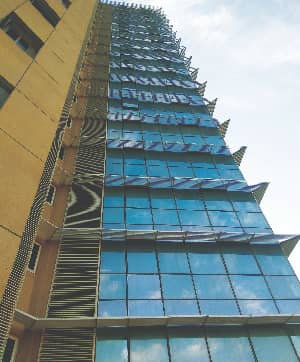
For instance, the total CO2 equivalent emitted by the manufacturing of an energy-efficient double glazing unit is offset on average within only 3 to 10 months by the energy savings realised compared to the same building equipped with inefficient glazing. In addition, glass is made of abundant non-polluting raw materials, its manufacturing process is highly energy efficient, requires low levels of water and generates little waste. In fact, recent life-cycle studies have shown that windows represent a very minor share of a building’s environmental impact from the cradle to the construction phase.
Moreover, the majority of glass products for buildings are recyclable at the end of their lives. This contributes to an even lower environmental impact. When recycled in new glass products, glass waste helps to economise both raw materials and energy in manufacturing new glass products.
FUTURE GLASS FAÇADES
Façade engineering is the art and science of resolving aesthetic, environmental and structural issues to achieve the effective enclosure of buildings. Specialist companies are dedicated to this niche sector of the building industry and engineers operate within technical divisions of façade manufacturing companies.
Façade engineers must consider aspects such as the design, certification, fabrication and installation of the building façades about the performance of materials, aesthetic appearance, structural behaviour, weather tightness, safety and serviceability, security, maintenance and buildability.
Building façade has a significant impact on the environmental and economic performance of buildings and projects. The specification of their elements at the early design phase depends on numerous technical, environmental and economic factors and involves several stakeholders. The procurement and delivery of the façade work package from the early design phase, through detailed design and manufacture, to installation is a process with several inherent risk factors due to the involved cost, technical and engineering complexities and its position on the critical path in all projects.
This research investigates the process of selection and specification of building façade elements at the early design phases with the overarching aim of identifying the issues affecting specification decisions, their root causes and their impact on projects.
As explained earlier, there are several types of Façade systems like unitized curtain wall, semi-unitized curtain wall, stick curtain wall, frameless glazing, etc. – each has its own uniqueness, and any of the above systems can be chosen depending upon the above factors. With the growing demand for glass façade, the speed of installation with quality is also becoming a mandatory factor. Thereby, Unitized curtain walls have become the preferred method for enclosing buildings, as more building owners, architects, and contractors see the benefits of this type of construction.
These façades are made in factories and carried to the installation site. In other words, there isn’t much effort required for the installation of these façades in the building. They can be set up on multiple floors if it’s a tall building. You can install vents and windows using these façades. As a result of being manufactured completely in the factory, it is easy to incorporate air and moisture resistance in the façade.
GETTING UPDATES ON THE LATEST GLASS PRODUCTS
With so many technologies that keep emerging every day, one really needs to upgrade his knowledge on a regular basis. I follow the same to keep myself updated.
The articles published in WFM media are always informative and such articles enhance the knowledge of the reader. I follow the same.
I usually read various articles being published on the net on various topics for Façade, which include updates on various properties of materials, design, tools, machinery, market trends, etc. For all the façade types, whether it is a Unitized Curtain Wall or Semi Unitized Curtain Wall, or any other system, the required raw materials mainly remain the same. Having frequent factory visits for various products, it becomes easy to understand the manufacturing processes of the raw materials which are prime members of the façade.
Another way by which I keep myself updated is by visiting special events or exhibitions. These exhibitions really help to enhance the knowledge of the latest trends in the market. The sales representatives of various products keep on visiting to explain about their products, which is another source for gathering updated information.
